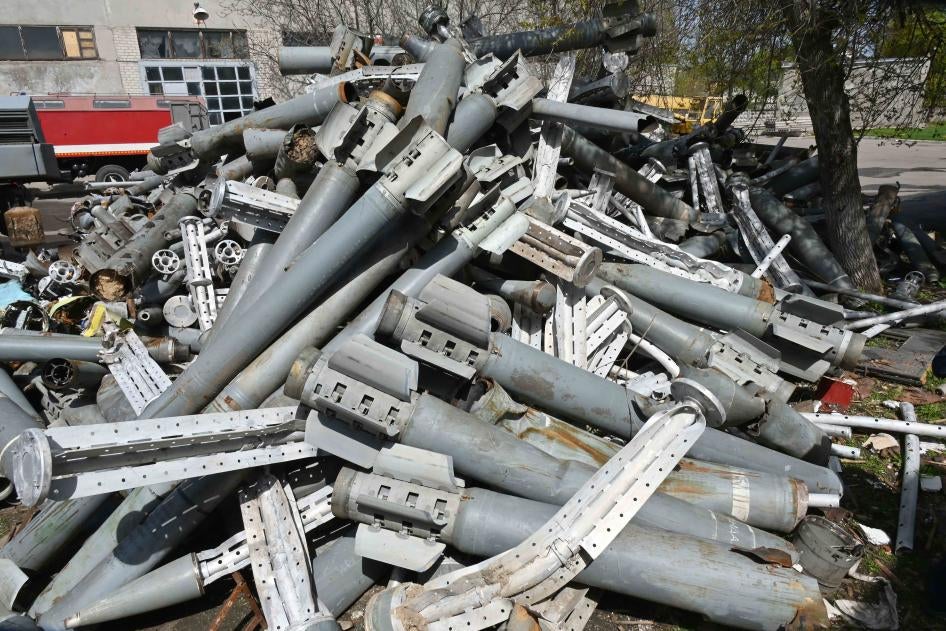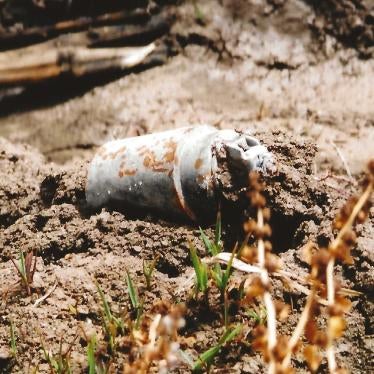There has been strong global media interest in the latest annual report on cluster munitions, “Cluster Munition Monitor 2023,” which Human Rights Watch helped produce.
Russia’s state-controlled media – propaganda outlets for the government – have covered it, too, which may seem surprising until you look at the Russian coverage. The outlets manage to discuss the report without mentioning its documentation of Russia’s repeated use of cluster munitions in Ukraine, including a 2022 incident in which a cluster munition apparently launched from Russian-controlled territory killed at least 58 civilians and injured over 100 more.
This attack and others by Russian forces have driven the global increase in civilian casualties from these weapons since Russia’s full-scale invasion of Ukraine in February 2022.
Manipulating the message is the norm for Russia’s state-controlled media. However, the focus on cluster munitions seems to have intensified since the United States decided in July to transfer US cluster munitions to Ukrainian forces.
It started at the top, when Russian President Vladimir Putin drew attention to the US transfers in an interview and claimed Russia had “not used” cluster munitions “yet” in Ukraine. Defence Minister Sergei Shoigu said Russian forces “will be forced” to use cluster munitions against Ukraine’s military in response to the US transfer.
Such ludicrous statements are easily fact-checked. The United Nations and Human Rights Watch, as well as Ukrainian authorities, have issued numerous reports detailing civilian harm from Russian cluster munitions attacks since the invasion. Cluster Munition Monitor found Russia to be responsible for more than 90 percent of the cluster munition attacks that killed and wounded 890 Ukrainians in 2022, the vast majority civilians.
Cluster munitions have been prohibited by 124 countries, but not Russia, Ukraine, or the United States, under the Convention on Cluster Munitions. They are banned for two main reasons. First, cluster munitions scatter small bomblets or submunitions over a wide area, causing extensive civilian harm in populated areas. Second, many submunitions fail to detonate on impact and pose a threat for months, years, and even decades until they are cleared.
Russia’s state-controlled media are keen to demonstrate civilian harm from Ukraine’s use of cluster munitions. They show unexploded US submunitions, yet disregard Russia’s own failed submunitions.
Every submunition has the potential to take a human life or limb. Russia’s selective media coverage tells us more about the dystopic state of Russia’s media than about the genuine problem of cluster munitions.










